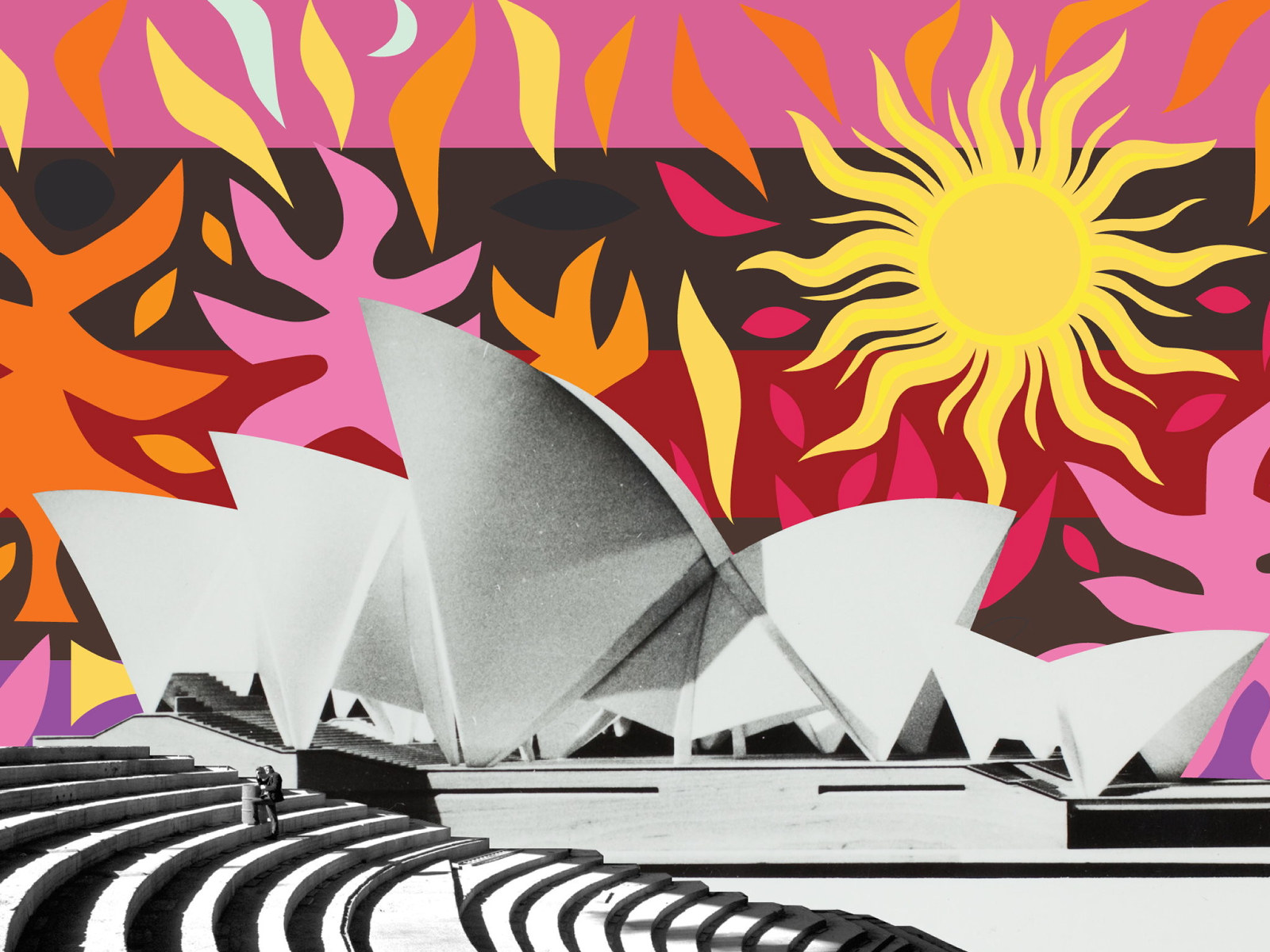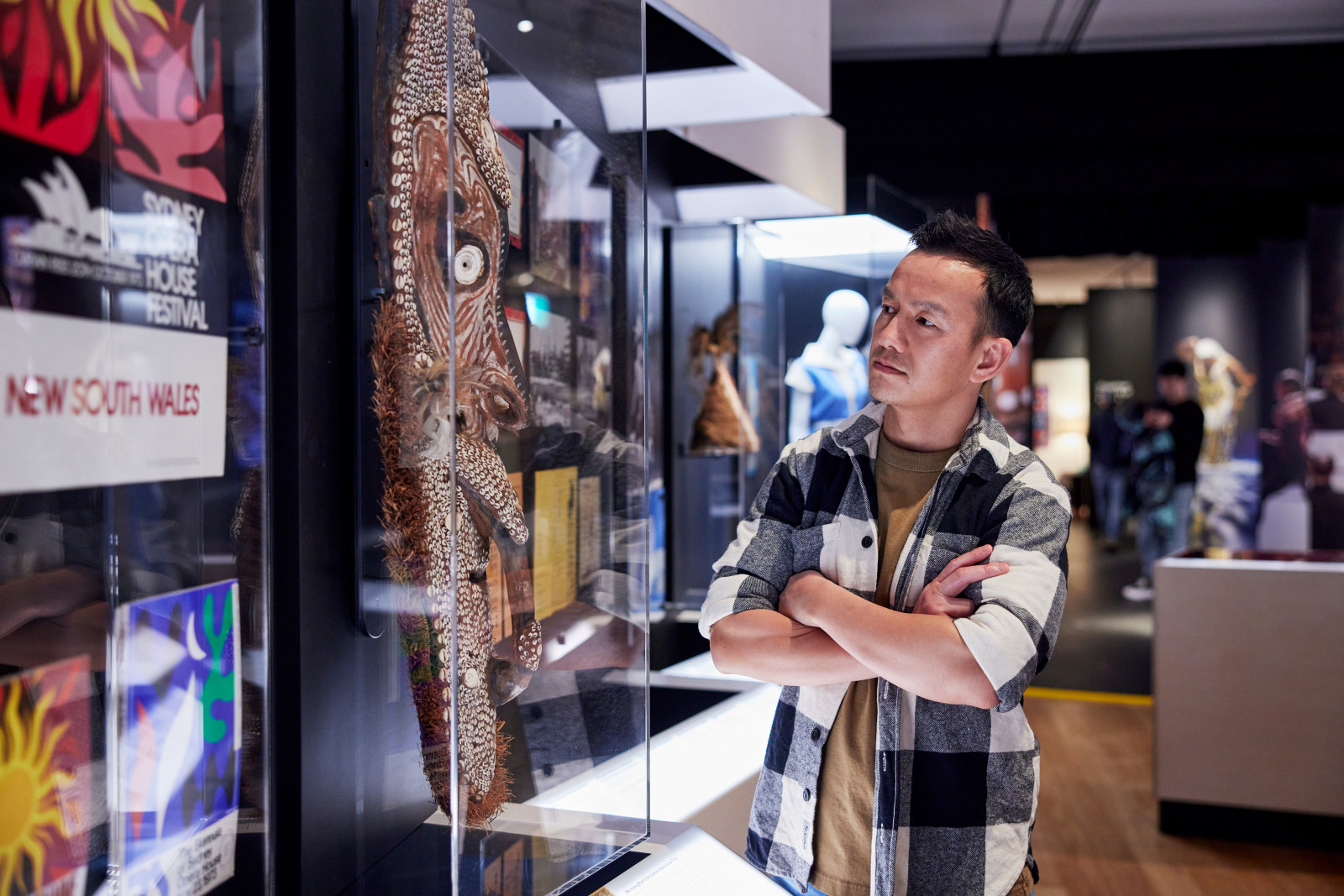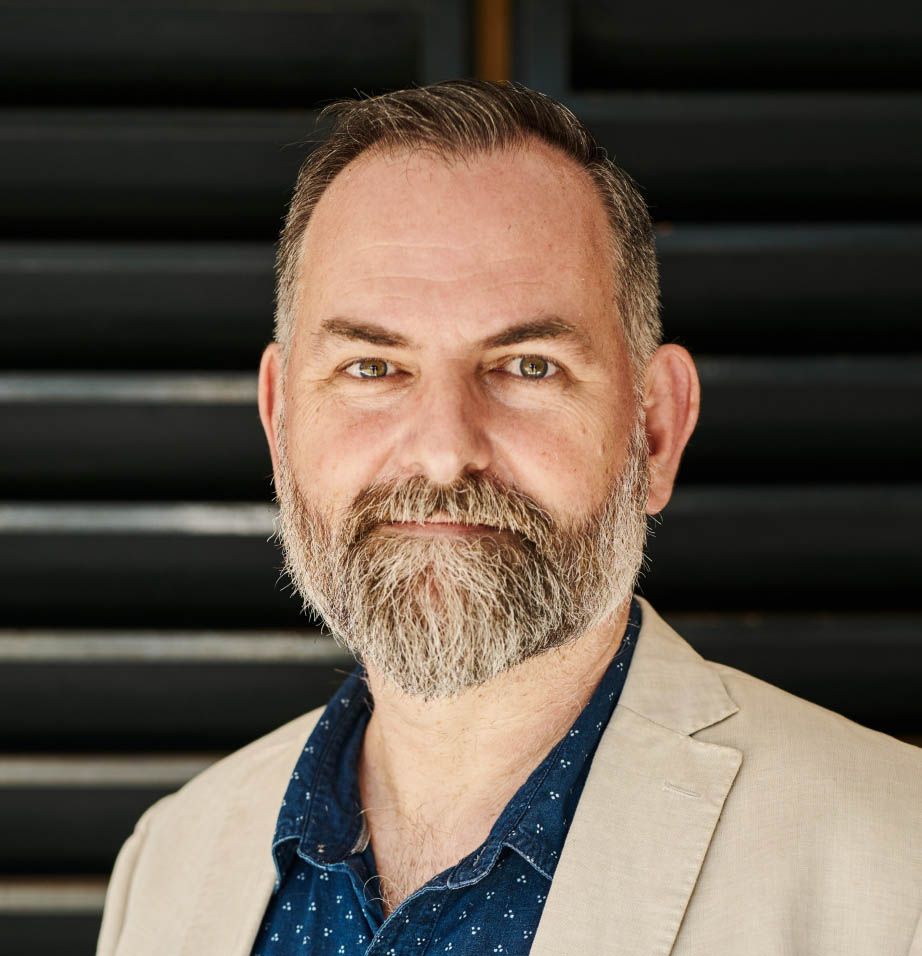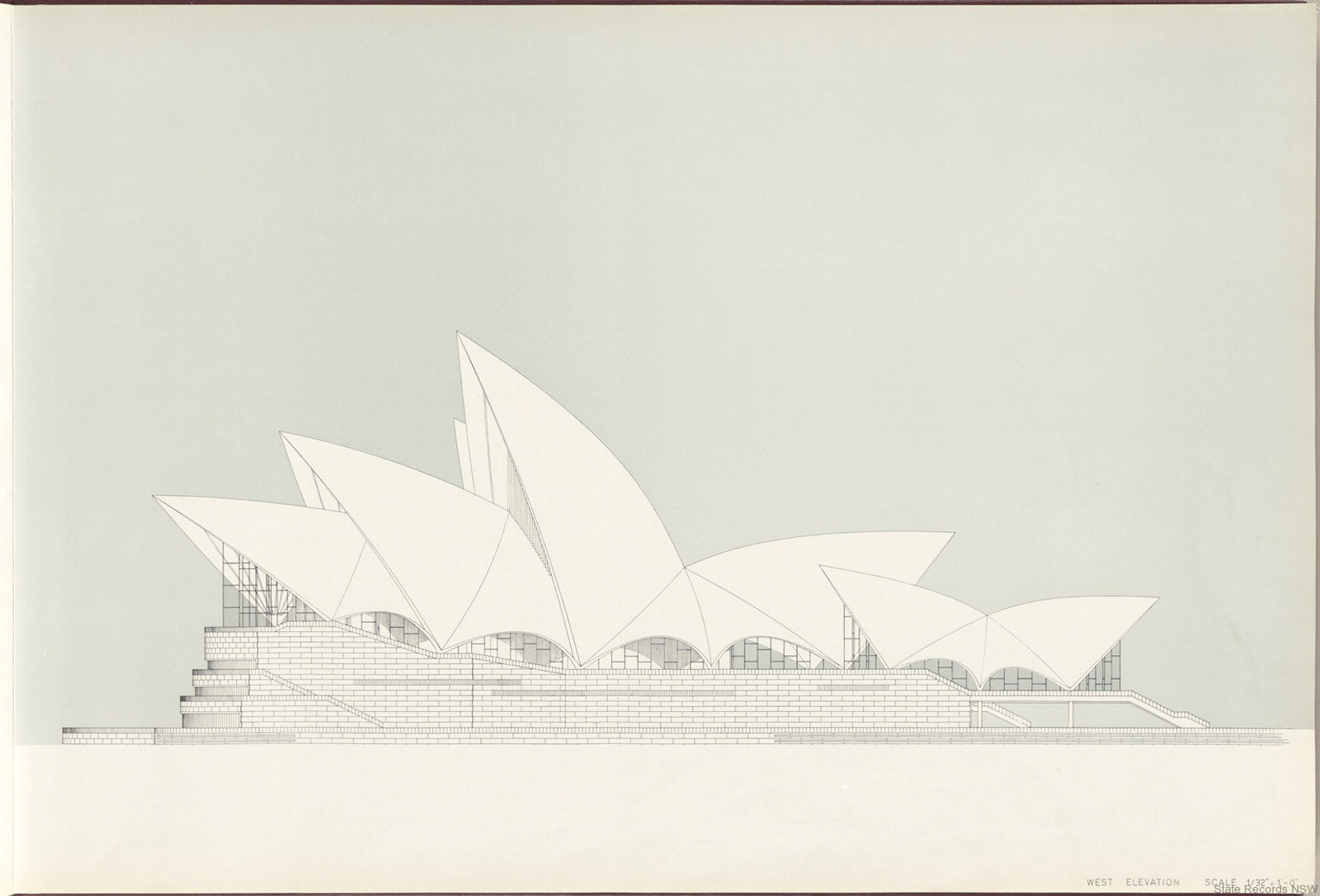The myth of a non-invitation
Jørn Utzon and the Sydney Opera House opening
It’s a widely held belief that architect Jørn Utzon was not invited to the Official Opening of the Sydney Opera House in October 1973, and that his name wasn’t even mentioned at the ceremony itself. A document from the NSW State Archives Collection, displayed in the exhibition The People’s House: Sydney Opera House at 50, tells a different story. Could the myth be a case of mistaken identity?
If you repeat something enough times it can become accepted as fact. A great myth woven around the Sydney Opera House’s Official Opening is that the building’s original architect, Jørn Utzon, was slighted – neither invited to attend, nor mentioned in the proceedings. A cursory internet search finds many examples: a 2015 article from the Smithsonian magazine with the emphatic title ‘He designed the Sydney Opera House … but wasn’t even invited to its opening’ states: ‘Since the vision of architect Jørn Utzon had a lot to do with the final work, it seems he would be toasted triumphantly at the Opera House’s opening. But Utzon wasn’t invited …’1
Following Utzon’s death in 2008, the Age newspaper published an obituary that asserted: ‘When the Opera House opened in 1973, the architect was not invited to the ceremony, and nor was his name mentioned’.2 A journalist on that night’s ABC news broadcast (shown in the exhibition among a selection of news stories) also declared: ‘In 1973, when the Sydney Opera House was officially opened, the architect was not invited’.
More than a million people gathered on Sydney Harbour to celebrate as the Queen opened the city’s opera house. Danish architect Jørn Utzon, who had argued with his Australian client during the 16-year long project, was not invited to attend.
Victoria Murphy, ‘Queen’s land – as Her Majesty sets off on her 16th trip down under, we look back at her 57-year Aussie love affair’, Daily Mirror (UK), 18 October 2011
In the archives
Research for the People’s House exhibition involved considerable time exploring the NSW State Archives Collection at our Western Sydney Records Centre. On one day I was going through stacks of correspondence relating to the opening, looking for material about participants from the Mornington Island community and South Pacific nations; however, the nature of hunting through an archive is that what you set out to find, and what you actually discover, are often two very different things.
Turning a page, I found myself reading a note from Sir George Mervyn Gray, Under Secretary to Premier Robert Askin. The note was dated 15 June 1973, and the heading read: ‘Subject: Opera House Opening – Mr Joern Utzon’. Gray wrote:
The Premier will recall that the question of Mr. Utzon’s attendance at the opening of the Opera House was raised in the press in February and that he indicated that Mr. Utzon would be invited. It would seem appropriate at this stage for the Premier to write to Mr. Utzon, extending a formal invitation for him and his wife to attend.
Gray went on to note that while travel and accommodation were not normally included in such invitations, given the ‘sensitive nature of the situation’, it would be quite appropriate to offer them in this instance.
The question of the Danish architect’s attendance was a delicate issue. His dramatic departure from the Opera House project in March 1966 had followed months of hostility from the Askin government, elected the year before, and especially from Davis Hughes, the new Minister for Public Works. In February 1973, when the opening date for the nearly complete Opera House was set for October, the Australian press asked whether Utzon’s name would be on the invitation list. Askin was quoted as saying: ‘I hope it is true that Joern Utzon will be coming for the official ceremony’.3 For some media outlets this was enough, and they simply announced that Utzon would be attending.
Dear Mr Utzon …
The invitation was duly sent, and the following page in the file was a copy of the letter, dated 20 June. ‘Dear Mr. Utzon’, it began.
I am writing to you on behalf of the Government of New South Wales to extend to you a warm invitation to attend the official opening of the Sydney Opera House on Saturday, 20th October. If Mrs. Utzon were to accompany you, we would, of course, be very pleased ...
With best wishes,
Yours sincerely,
[signed] R.W. Askin
Premier
The letter included the offer of flights and accommodation.
Yours sincerely, Jørn Utzon
The Australian and international press were at this stage hounding Utzon, desperate to know if he would attend, and to secure any comment from him on the completed building. The following page was Utzon’s actual response to the Premier’s invitation – the original typed letter, dated 1 August. It is both straightforward and diplomatic.
Dear Mr. Premier,
Thank you for your kind invitation to attend the official opening of the Sydney Opera House on Saturday, 20th October.
Your invitation to my wife and me pleases me, and also it pleases the many architects, who worked in my office on the Sydney Opera House, because it proves that the Government of New South Wales appreciates, that 9 years of hard work in my office has resulted in something good for Sydney.
I am under great pressure from the press and also from some institutions and have received several invitations to visit Sydney at the time of the opening of the Sydney Opera House with the purpose of comparing my project for Stage III with what has been built, after I left Sydney, and commenting on the removal of me as architect by your Minister of Public Works and on his alterations and reductions of the program of the building.
Unfortunately I cannot see anything positive in either the actions of Mr. Davies [sic] Hughes or the work done by his team of architects and engineers, so if I were to go to Sydney, it would not be possible for me to avoid making very negative statements, and as I cannot be the guest of the Government of New South Wales and at the same time critisize one of its ministers, I am sorry to say, that I therefore have to refrain from coming to the opening of the Sydney Opera House.
I sincerely hope, that the Sydney Opera House will support and inspire the theatrical and musical culture of your fine city. That was the goal the previous government and its Opera House Committee set for me, and that was the goal to which I devoted myself completely in the many years I enjoyed being the architect of the Sydney Opera House.
With best wishes,
Yours sincerely,
And there at the end in black ink was Jørn Utzon’s signature.
The Premier’s Office announced the following day that Utzon would not be attending, a spokesman explaining that as ‘a guest of the government he would not like to repeat his criticisms of the building’, before adding that ‘I thought he was quite nice about it … obviously the hatchet’s been buried’.4 The Bulletin recorded that Utzon ‘sensitively and sensibly declined’.5
In 1978 Utzon was interviewed by Ava Hubble, the Opera House’s press officer, for an article in the Sydney Opera House Monthly Diary. He discussed the invitation, expanding on his earlier letter:
I would like to explain why I declined the invitation to the official opening.
... It was not for any negative reasons. I have never had any negative feelings about the Opera House. I thought it was the most diplomatic thing I could do. An enormous number of newspaper people were pursuing me at the time, asking about the ‘true story’ of the Opera House and my ‘bitter recriminations’. I did not want to be involved, at the time, in endless discussions about the past, and I knew there would be no way of avoiding the press if I came to Sydney. I thought my presence at the opening ceremony, especially in the company of people like Davis Hughes, who I knew would be attending, would increase the possibility of the resurrection of controversial issues. Publicity of that kind might have overshadowed the celebrations and embarrassed guests who were not involved in those issues. I did what I could to prevent that happening.6
The (Danish) elephant in the room
The second part of the myth is the assertion that Utzon wasn’t mentioned at the opening. Citing a 2006 publication, the Wikipedia pages for both the Opera House and Utzon himself repeat this: ‘The Sydney Opera House was formally opened by Queen Elizabeth II, on 20 October 1973. A large crowd attended. Utzon was not invited to the ceremony, nor was his name mentioned’.7 The line is repeated verbatim in Google’s ‘Arts and Culture’ page on the Opera House.
It’s true that the Queen’s speech, though alluding to his departure from the project, doesn’t mention Utzon. (‘I understand’, she said, ‘that [the Opera House’s] construction has not been totally without problems … But every great imaginative venture has had to be tempered by the fire of controversy’.) But nor does it mention anyone else by name: stage III architect Peter Hall, engineer Ove Arup, even the former Labor Premier Joe Cahill, who had begun the project. Somewhat surprisingly, however, given his government’s role in Utzon’s departure, in his introductory speech Premier Askin did refer to the architect:
It is fit and proper that we should pay tribute to the many men and women, from other countries as well as our own, whose talents, skills and dedication have brought about the realisation of Jørn Utzon’s original and imaginative design.
He continued:
We pay tribute to the courage and foresight of those who commenced and carried through the construction – the planners, the architects and engineers, the carpenters and electricians, the riggers and the glaziers and the tilers and the workers in a hundred crafts who have all contributed to the success of this project, and I am happy to inform you, Your Majesty, that many of them are here today to see the realisation of all they have worked for.
Origins
When the myth of Utzon’s non-invitation arose is unclear, as it was known in 1973 that an invitation had been extended and declined, and this has been repeated, and the letter quoted, in publications ever since.8 A possible source is confusion with an earlier statement by the Askin government that Utzon would not be invited back to complete the then unfinished project: ‘the Premier, Mr Askin, and Cabinet made it clear the Government does not intend to invite the former Opera House architect, Mr Joern Utzon, to return to Australia to complete the project’.9
Certainly the myth had already gained traction in the late 1980s, as this was when I heard it for the first time – somewhat ironically, while studying architecture.
The line ‘He was not invited to the opening ceremony or even mentioned in any of the speeches’, replicated verbatim many times, may actually suggest the origins of the myth – and that it actually refers to a completely different person: Sir Eugene Goossens. An internationally renowned conductor, the English-born Goossens came to Australia to conduct the Sydney Symphony Orchestra and serve as director of the NSW State Conservatorium of Music from 1947 to 1956. In 1947 he famously stated that ‘Sydney must have an opera house!’, kickstarting the campaign he championed to create one.
We must have an opera house within five years. Sydney is taking its place among the world’s major symphonic groups. A fine hall is essential if the public is to hear the orchestra at its best ... If my plan succeeds, Sydney will have, with the cooperation of those in authority, a great opera house. There is substantial support for the site [Bennelong Point] and we intend to follow it up.10
Appointed by Premier Cahill to the five-member panel charged with investigating the proposal and determining a location, Goossens also championed the final site – Bennelong Point:
The site that he [Goossens] suggested as fulfilling all the requirements was at Fort Macquarie and there is no doubt that the building of an Opera House on such a site, where it would take advantage of the beauty of the Harbour, could be developed so that the Sydney Opera House would rank with some of the greatest in the world … It is such edifices, representative of the cultural life and aspirations of the people, that, together with its economic and commercial aspects, constitute a great City.11
In 1956, however, the recently knighted Goossens fell foul of a sex scandal when his secret affair with artist Rosaleen Norton, dubbed the ‘witch of Kings Cross’ due to her interest in the occult, was gleefully exposed by the media. Goossens resigned his position and returned to England shortly after. He died six years later.
In 1973, many musicians, especially from the Sydney Symphony, keenly felt the omission of any reference to Goossens at the Official Opening. Music critic William Hoffman, writing in May 1973, called him ‘the Opera House’s forgotten man’:
In the flurry of activities associated with the grand opening – at last – of the Sydney Opera House later this year there has been no mention of the name of the one person who perhaps more than any other was the proponent of an opera house-concert hall at Bennelong Point. Such a silence suggests that this name, rather than being merely overlooked, is being studiously ignored. I refer, of course, to the late Eugene Goosens [sic] … Is the opening of the complex he envisaged to pass without his name even being mentioned? 12
Ava Hubble recorded that when the Opera House’s general manager Frank Barnes walked backstage after the opening reception he was even booed by musicians from the Sydney Symphony Orchestra for the omission.13 Phrases familiar from later, erroneous, articles on Utzon, such as that Goossens ‘was not even mentioned in any of the speeches’, appeared in the press. It is a small step to switch the two names, and create a new mythology altogether.
What we may have is a simple conflation of the two men, neither of whom was at the opening – Utzon because he declined, and Goossens because (along with the Opera House’s other great champion, Joe Cahill) he was dead. The many supporters of both felt their absence keenly.
Official correspondence
Notes
1. Maris Fessenden, ‘He designed the Sydney Opera House … but wasn’t even invited to its opening’, Smithsonian, 6 August 2015, accessed 23 May 2023. Read more.
2. ‘Utzon: the Sydney Opera House’s brightest star’, The Age, 2 December 2008.
3. The Sydney Morning Herald, 16 February 1973.
4. ‘Opening fails to attract Utzon’, The Sydney Morning Herald, 11 August 1973.
5. Brian Hoad, ‘The Opera House’s forgotten few’, The Bulletin, vol 95, no 4869, 1 September 1973.
6. Ava Hubble, ‘An interview with the architect of the Opera House, Joern Utzon’, Sydney Opera House Monthly Diary, vol 5, no 9, June 1978. See also Ava Hubble, More than an Opera House, Lansdowne Press, Sydney, 1983, p445.
7. Sydney Opera House page, Wikipedia, accessed 17 May 2023. The page was edited on 4 June 2023 to include the Smithsonian magazine reference and remove the reference to Wendy Lewis et al’s Events that shaped Australia, Lewis, Balderstone and Bowan, New Holland Publishers, 2006. Following the publication of media stories relating to The People’s House: Sydney Opera House at 50 exhibition, both the Opera House and Utzon entries have been updated to remove the ‘non-invitation’ myth. Read more.
8. See for example Helen Pitt, The House, Allen & Unwin, Sydney, 2018, and Peter FitzSimons, The Opera House, Hachette Australia, Sydney, 2022.
9. ‘Opera House settlement hope today’, The Canberra Times, 1 March 1967, p3.
10. Eugene Goossens, 20 October 1948, quoted in Opera House timeline: Ensemble 1914–1953, theoperahouseproject.com
11. ‘Editorial: Sydney’s Opera House’, Construction, 27 October 1954, p1.
12. W L Hoffman, ‘The Opera House’s forgotten man’, The Canberra Times, 1 May 1973, p19.
13. Ava Hubble, The strange case of Eugene Goossens and other tales from the Opera House, Collins, Sydney, 1988, p46. See also FitzSimons, The Opera House, p472.
Published on
Related
Browse all
Past exhibition
The People’s House: Sydney Opera House at 50
Celebrating five decades of extraordinary performances and unforgettable moments from the Sydney Opera House

A Sepik River mei mask
An eye-catching object in the People’s House: Sydney Opera House at 50 exhibition reveals an unexpected story of the opening ceremonies, of performance, and of international diplomacy

